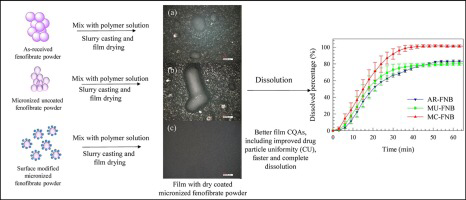- Home
- Blog
- News
- Basics
- Sources
- Agencies, Regulatory & Organisations
- CERSI Excipients Browser
- Excipient Report
- Excipient DMF List
- EXCiPACT Certified Companies
- Excipient Documentation
- Excipient EINECS Numbers
- Excipient E-Numbers
- FDA Inactive Ingredient List
- FDA GRAS Substances (SCOGS) Database
- IPEC Americas
- USP - U.S. Pharmacopeia
- Definitions
- Whitepapers / Publications
- Supplier
- Services
- Media
- Events
- 1st pharmaexcipients Poster Award
- Event Calendar
- Events featured by pharma-excipients
- 4th Annual Formulation & Drug Delivery Congress
- DDF Summit
- ExcipientFest Americas
- ExcipientFest Asia
- Global CompliancePanel
- International Conference and Exhibition on Pharmaceutics & Novel Drug Delivery Systems
- Formulation & Drug Delivery USA Congress
- Laboratory Medicine 2018
- Making Pharmaceuticals Europe
- Making Pharmaceuticals Exhibition
- Pharma Integrates
- PharmaExcipients China @CPhI China
- TTC Technology Training Center
- Jobs
- Online Sourcing
- Contact
17. September 2018
The growing interest on polymeric delivery systems for pulmonary administration of drugs anticipates a more direct and efficient treatment of diseases such as tuberculosis (TB) that uses the pulmonary route as the natural route of infection. Polymeric microparticles or nano-in-microparticles offer target delivery of drugs to the lungs and the potential to control and sustain drug release within TB infected macrophages improving the efficiency of the anti-TB treatment and reducing side effects....
08. August 2018
Polymeric gels have emerged as promising vehicles for drug delivery across the skin. Stratum corneum, the topmost layer of the skin, does not allow hydrophilic and high molecular weight drugs to permeate without enhancing techniques. A number of enhancement techniques are being developed to increase the transdermal drug permeation. The transdermal route has many advantages and has therefore evolved as an attractive and convenient alternative to the existing routes of drug delivery that causes...
17. May 2018
Current in vitro disintegration methods for polymeric films are qualitative and introduce significant user bias. The goal of these studies is to develop a novel, quantitative disintegration technique which can be used to characterize polymeric films in vitro. Methods A method was developed using a Texture Analyzer instrument to evaluate film disintegration. Solvent-casted, clinically advanced, anti-HIV, vaginal films as well as marketed vaginal films were used throughout these studies. Method...
25. March 2018
Hydrogels are a unique class of three dimensional cross-linked polymeric networks that can hold a large fraction of aqueous solvents and biological fluids within their structures. Nowadays, hydrogels have attracted a growing interest of many scientists in different fields of research. Intelligent hydrogels have found a significant role in a wide variety of applications such as drug delivery systems, tissue engineering, optics, diagnostics and imaging. The purpose of this paper is to present a...
28. November 2017
Recent work has established polymer strip films as a robust platform for delivery of poorly water-soluble drugs via slurry casting, in particular using stable drug nanosuspensions. Here, a simpler, robust method to directly incorporate dry micronized poorly water-soluble drug, fenofibrate (FNB), is introduced. As a major novelty, simultaneous surface modification using hydrophilic silica along with micronization was done using fluid energy mill (FEM) in order to reduce FNB hydrophobicity and...
24. March 2017
Abstract Recent work established polymer strip films as a robust platform for delivery of poorly water-soluble drug particles. However, a simple means of manipulating rate of drug release from films with minimal impact on film mechanical properties has yet to be demonstrated. This study explores the impact of film-forming polymer molecular weight (MW) and concentration on properties of polymer films loaded with poorly water-soluble drug nanoparticles. Nanoparticles of griseofulvin, a model...
06. February 2017
Abstract The aim of this study was to develop mucoadhesive pellets on a thiolated pectin base using the extrusion-spheronization technique. Thiolation of pectin was performed by esterification with thioglycolic acid. The molecular weight and thiol group content of the pectins were determined. Pellets containing pectin, microcrystalline cellulose and ketoprofen were prepared and their mucoadhesive properties were evaluated through a wash-off test using porcine intestinal mucosa. The in vitro...
30. January 2017
Abstract: This work is the continuation of a study focused on establishing relations between surface thermodynamic properties and in vitro release mechanisms using a model drug (ampicillin trihydrate), besides analyzing the granulometric properties of new polymeric materials and thus establishing the potential to be used in the pharmaceutical field as modified delivery excipients. To do this, we used copolymeric materials derived from maleic anhydride with decreasing polarity corresponding to...
17. November 2016
Abstract The use of nanoparticles for drug delivery is still restricted by their limited stability when stored in an aqueous medium. Freeze drying is the standard method for long-term storage of colloidal nanoparticles; however the method needs to be elaborated for each formulation. Spray freeze drying (SFD) is proposed here as a promising alternative for lyophilizing colloidal nanoparticles. Different types of polymeric and lipid nanoparticles were prepared and characterized. Afterwards,...
27. July 2016
Abstract Two kinds of mucoadhesive buccal tablets of clonazepam (CLZ) were developed to provide, a prolonged local or systemic delivery respectively. Tablets prepared by direct compression of combinations of different polymers were tested for swelling, erosion and residence time properties. Carbopol 971P/hydroxypropylmethylcellulose and Poloxamer/chitosan mixtures were the best and were selected for drug loading. The effect of CLZ complexation with different cyclodextrins was investigated....





